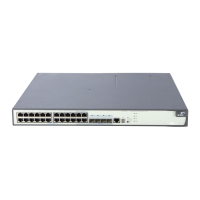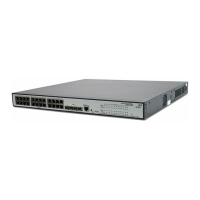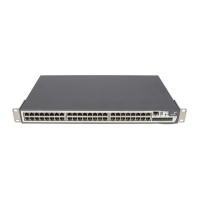1-9
Field Description
PSE pairs control ability
Indicates whether or not the PSE-PD pair control is
available.
Power pairs PoE mode, which can be Signal or Spare.
Port power classification
Port power classification of the PD, which can be the
following:
z Class0
z Class1
z Class2
z Class3
z Class4
Link aggregation supported Indicates whether or not link aggregation is supported.
Link aggregation enabled Indicates whether or not link aggregation is enabled.
Aggregation port ID
Aggregation group ID, which is 0 if link aggregation is
not enabled.
Maximum frame Size Maximum frame size supported
Device class
Device type, which can be:
z Connectivity device, indicating an intermediate
device.
z ClassⅠ , indicating a normal terminal device. All
terminal devices that are LLDP-enabled are of this
type.
z Class Ⅱ , indicating a media terminal device. A
device of this type is media-capable. That is, besides
the capabilities of a normal terminal device, it also
supports media stream.
z Class Ⅲ , indicating a communication terminal
device. A device of this type supports IP
communication systems of end user. A device of this
type supports all the capabilities of a normal terminal
device and a media terminal device and can be used
directly by end users.
Media policy type
Media policy type, which can be:
z unknown
z voice
z voiceSignaling
z guestVoice
z guestVoiceSignaling
z softPhoneVoice
z videoconferencing
z streamingVideo
z videoSignaling
Unknown Policy
Indicates whether or not the device can acquire media
policy data
VLAN Tagged
Indicates whether packets of the media VLAN are
tagged.
Media Policy VlanID ID of the media VLAN
Media Policy L2 priority Layer 2 priority
Media Policy Dscp DSCP precedence
HardwareRev Hardware version

